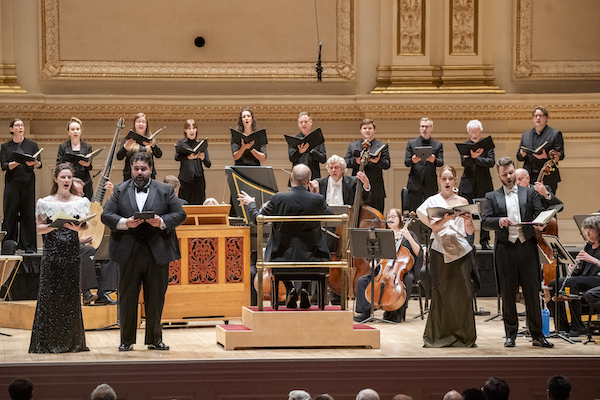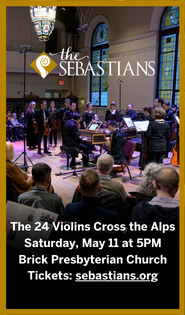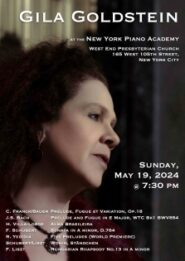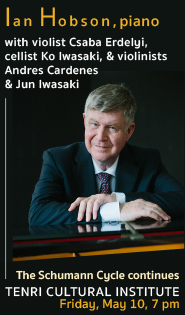St. Luke’s ushers in the season with a radiant “Christmas Oratorio”

Bach’s Christmas Oratorio heralded in the holidays at Carnegie Hall on Thursday evening. Bernard Labadie led the Orchestra of St. Luke’s and the La Chapelle de Québec, joined by soprano Liv Redpath, contralto Avery Amereau, tenor Andrew Haji, and baritone Joshua Hopkins in a radiant, emotionally rich performance of this seasonal favorite.
Unlike Bach’s great Passions, the Christmas Oratorio was not conceived as a single work. The six cantatas, which comprise it, were first performed in Leipzig throughout the 1734-35 Christmas season. Only with the Bach revival in the mid-nineteenth century and the advent of long-playing recordings, did it come to be cast as a single entity.
The cantatas tell the story of the Nativity from Christmas Day to the Feast of the Epiphany. As in Bach’s passion settings, the narrative is sung in recitative form, while both personal reflections upon the mystery of Christ’s birth and joyous celebratory outbursts are expressed by soloists, chorus, and orchestra.
This performance would best be characterized as historically informed, rather than one which attempted to replicate what churchgoers at the Thomaskirche in Leipzig might have heard in Bach’s time. The ensemble was comprised of 30 singers—large enough to give voice to Bach’s glorious choruses, while small enough to provide intimacy when needed. True Baroque flavor came from the exceptional consort of continuo players.
Labadie favored a measured approach to the Christmas Oratorio. Tempos were relaxed for the most part with no breathless races to the finish for the chorus and orchestra. This permitted the musical lines, and to a certain degree the text, to emerge with clarity, as well as the instrumental obligatos the opportunity to be savored.
This approach in no way diminished the drama or emotional impact of the work. Although certain elements, such as the almost choreographed movement of the soloists as they walked center stage to sing, were slightly at odds with the work’s religious spirit. A particularly charming acoustical surprise came during the aria “Flösst, mein Heiland, flösst dein Namen” when Labadie placed a soprano and oboist in the balcony to create an echo effect.
Andrew Haji sang both the Evangelist’s recitatives and the tenor arias. It was almost if he had two voices. One, gleaming and pure with which to tell the story, and the other of far greater depth and color on display in the arias. Having Haji stand behind the continuo to sing the recitatives did him no favors, his voice audible but lacking presence. The tenor was at his fiery best in bravura arias such as “Ich will nur dir zu Ehren leben” when he stood center stage in front of the orchestra.
Liv Redpath’s silvery soprano brought a shimmering, ethereal beauty to everything she sang. She interjected a bit of tease into her exchanges with the vocal and instrumental echoes in “Flosst, mein Heiland, flösst dein Namen.” The aria “Nur ein Wink von seinen Händchen” permitted Redpath to display both her crystalline high notes and the warmth and beauty of her lower range.
In “Bereite diech, Zion, mit zärtlichen Trieben,” Avery Amereau revealed the full measure of her fine contralto voice. Her sensitivity to diction, phrasing, and rhythm, as well as the subtle sensuality which she brought to the aria, expressed the spirituality as well as the fervor implicit in the text and music. Amereau’s long, sustained lines in “Schlafe, mein Liebster, geniesse der Ruh” were especially impressive, as was the sense of intimacy she brought to “Schliesse, mein Herze, dies selige Wunder.”
Joshua Hopkins’s deluxe baritone and dramatic flair was ever evident in this performance. He sang “Grosser Herr, o starker König” with warmth and authority and summoned the same forces in an impressive “Immanuel, o süsses Wort!” The latter is an extended recitative intertwined with the sopranos of the chorus singing the chorale tune. Hopkins’s attention to textural detail and vocal colorings vividly illumined the pieces’s contrasting emotions of fear of death versus hope for eternal salvation.
Much of the glory in this performance went to the orchestra. Concertmaster Krista Bennion Feeney led the strings in a vibrant performance, and excelled in her solo obligatos. She engaged in an especially delightful musical dialogue with Amereau in “Schliesse, mein Herze, dies selige Wunder.” The trumpet sound had a liquidity and sheen like that of a mirror. The character and virtuosity with which the woodwinds, especially the oboes, played was infectious.
As with the Orchestra of St. Luke’s, La Chapelle de Québec is comprised of musicians handpicked by Labadie. The brilliant choruses, such as “Jauchzet, frohlocket” which opens the work, were executed with stateliness and excitement. “Brich an, o schönes Morgen licht” was imbued with a sense of wonder rather than sentimentality. When fleetness was in order, as in “Lasset uns nun gehen gen Bethlehem,” the chorus responded with energy and precision. The sincerity and depth with which the chorus sang the chorales grounded the performance.
St. Luke’s Chamber Ensemble returns to Carnegie Hall with “Vivaldi Virtuosi” on December 13. oslmusic.org







Posted Dec 08, 2023 at 4:47 pm by William McClelland
Excellent review. I was there and agree that this was a wonderful performance of an extraordinary masterpiece.